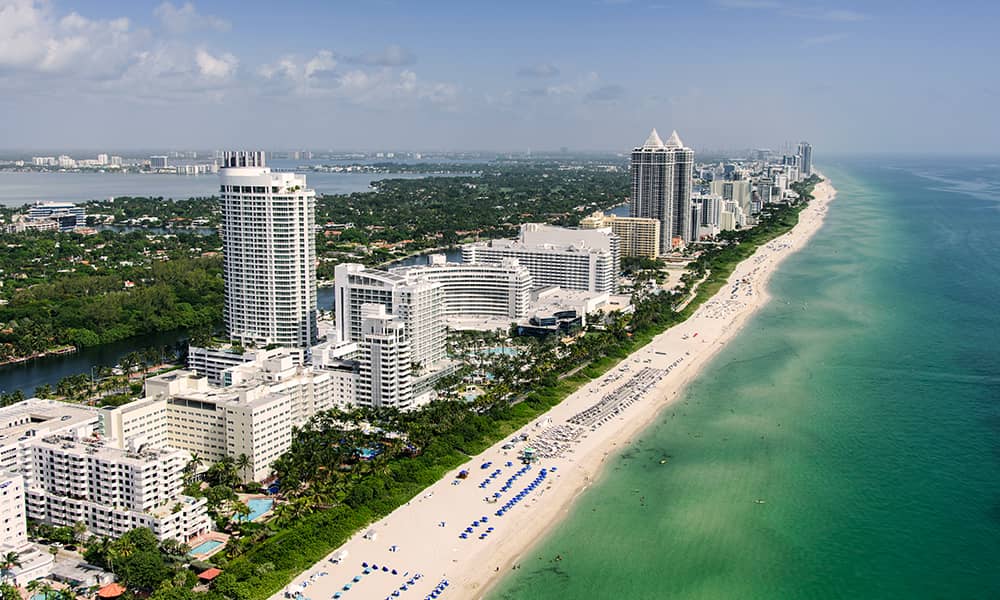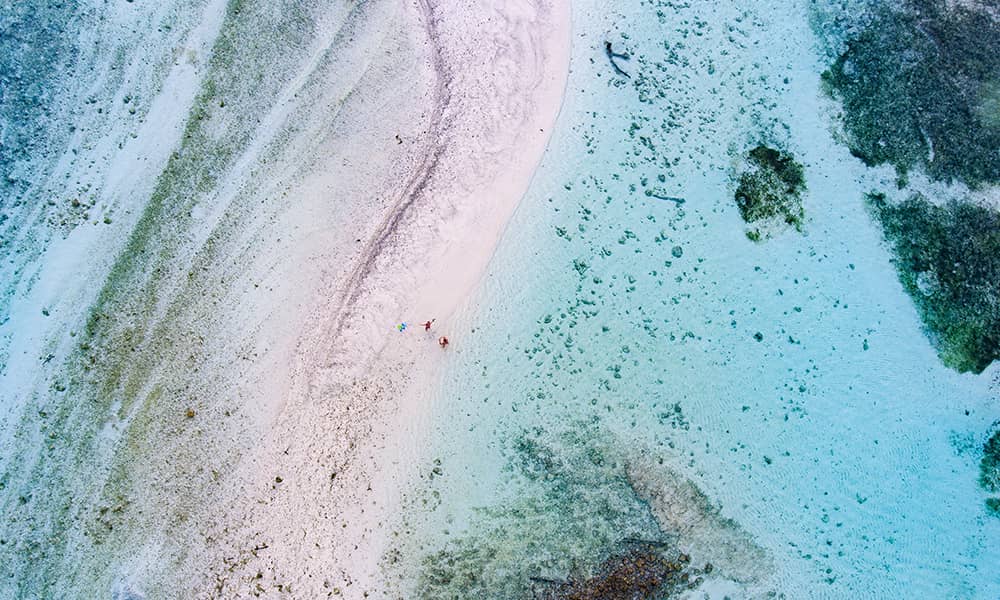Thanks to climate change, a number of the world’s most loved destinations are under threat. In a number of years (it’s hard to say how many, exactly), due largely to a lack of action from those leading change to this country and others, a number of glorious destinations will be dealing with some pretty serious changes.
Doom Tourism is a new term for travellers who seek to experience global destinations before they no longer exist. It’s a sad reality, but one we can all work towards changing by choosing more eco-conscious ways to live and travel.
Here’s the shortlist of the places you should visit ASAP.
1. Swiss Alps
The ski fields of Switzerland’s alpine region are under close watch as shifting snow and rainfall patterns change the face of one of the world’s best-known ski destinations.
A study published last year in the Theoretical and Applied Climatology journal states that in Switzerland, continuous snow cover can only be expected on elevations of 2,000m above sea level by the end of the twenty-first century, and at low elevations there could be as little as two snow days per year, averaging an overall snow reduction of 30%. So while the beloved snowy Alps are unlikely to entirely disappear any time soon, the days of carving up the slopes at low-altitude ski resorts may be limited.
https://www.instagram.com/p/BtQ6oNhFK5L/
2. The Bolivian Andes
The Bolivian Andes provide an example of climate change damage already done. The world’s former highest ski resort, with a summit higher than Everest base camp, closed after 70 years of operation when the glacier completely melted in 2009.
The resort now sits desolate with visitors drawn to the area for the views rather than the powder. Now other tropical glaciers in Bolivia such as Tuni and Condoriri are expected to follow suit, with researchers predicting their demise by 2025 and 2045 respectively.
https://www.instagram.com/p/B1mZjsxnxES/
3. Kiribati
Climate change has many Pacific nations on edge and the picturesque islands of Kiribati are no exception. Straddling the equator between Australia and Hawaii, Kiribati faces increased flooding and coastal erosion as sea levels rise. Sections of farmland have already washed out to sea in previous weather events and saltwater is threatening to infiltrate freshwater stores.
The risk of climate change is so great to its 100,000-strong population that the government has drafted a relocation strategy to assist citizens in migrating to more stable ground. For now, however, Kiribati is an untouched paradise offering private island escapes, scuba diving, bird watching and world-class fishing.
https://www.instagram.com/p/B4k5-i3Amp2/
4. Great Barrier Reef
On home soil, our World Heritage-listed Great Barrier Reef is taking a punch, with more than 90% of the individual reefs affected in some capacity by bleaching, according to a report released by the Climate Council earlier this year.
The report claims bleaching events will become more frequent and severe as ocean temperatures rise further, making it more difficult for the vibrant underwater playground to rebound.
https://www.instagram.com/p/B1UcFV5pZpi/
5. France’s wine regions
Rising mercury has altered the maturation patterns of grapes in France’s wine regions such as Burgundy and Champagne, with fruit ripening at a faster rate in recent decades. A study published this year in the journal Nature Climate Change found that between 1981 and 2007, harvest dates in France’s winegrowing regions shifted forward by an average of ten days.
Early harvests typically produce higher-quality wine in cooler areas like France, so this isn’t all bad news, but it’s unclear what impact rising temperatures will have on the country’s wine region as the trend continues.
https://www.instagram.com/p/B3ZYQxYBHV_/
6. Venice
A city built on water has good reason to be nervous about climate change, and Venice suffers a double whammy with the Italian city’s infrastructure reportedly sinking in tandem with rising ocean levels.
To prepare for imposing tidal movements, the city has installed a mobile gate system across three inlets, designed to reduce the impact of high water levels and associated flooding. While there is debate about whether the system will be enough to protect the city into the future, it’s likely to sustain the Venetian romance for a while at least.
https://www.instagram.com/p/B5BMKorI9bN/
7. Mumbai
Mumbai, India’s frantic financial and entertainment capital is no stranger to extreme weather events. Last year heavy monsoonal rains swept through the city disrupting transport networks and halting daily life, just a month after a heatwave killed over 2,000 people. These events followed the devastating floods that ravaged the city in 2005, touted as ‘the day Mumbai washed away’.
A climate change vulnerability index released in 2013 put Mumbai up there with the worst affected when it comes to increases in rainfall, heat, humidity and rising sea levels, and without proper mitigation strategies, it’s cause for concern.
https://www.instagram.com/p/B4cld3VJSx7/
8. Maldives
The Republic of Maldives is the world’s lowest-lying country, with many of its islands sitting less than a metre above sea level. Recognising their susceptibility to shifting weather patterns, Maldivians raised the climate change alarm back in the 1980s after tidal waves swept through the capital of Malé.
Since then the island nation has suffered from land loss, beach erosion and damage to infrastructure and coral reefs as a result of the weather, including a tsunami that flooded the country in 2004. Keen to join the fight to protect its world-famous island paradise, the Maldives was one of the first nations to ratify the Paris climate change agreement earlier this year.
https://www.instagram.com/p/BvrafyBH2jy/
9. Miami Beach
Miami Beach in the USA is best known for its sun and sand, but its reputation as a flood zone isn’t far behind. Jutting out from Florida’s east coast, high tides regularly sweep through the low-lying metropolis, but the concern is if flooding becomes more regular and extreme, the local infrastructure may not cope, particularly given the resort city is built on porous limestone foundations — not an ideal water barrier.
Mitigation activity is taking place, such as road elevation and pump installation, but if the prediction that sea level extremes will become more frequent proves accurate, Miami Beach could face a waterlogged future.

10. Greenland
With news that the ice covering 80% of Greenland is fast disappearing, a surge of travellers are capitalising on Greenland’s ‘climate change tourism’, fearing the end of the picturesque frozen landscape.
Greenland made headlines in 2015 when it was reported the Jakobshavn Glacier had shed the largest chunk of ice ever recorded. While calving is a natural process, this whopper spurred serious debates about climate change and the future of the world’s biggest non-continental island.
https://www.instagram.com/p/B2XFBLnh_7_/
This story originally appeared in Fitness First magazine.







